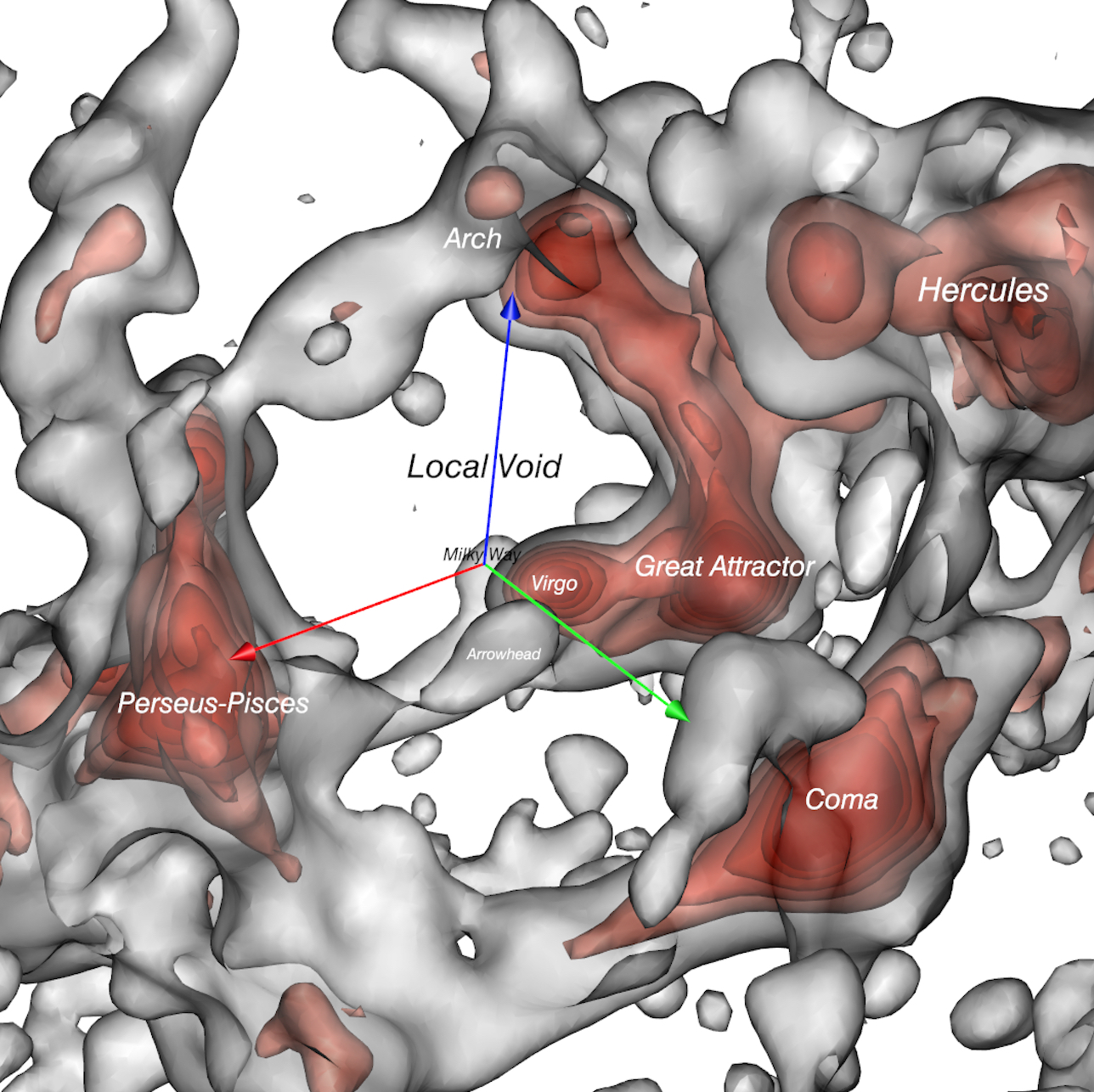Mysteries of the Local Void: Scientists Map a Vast Emptiness Around the Milky Way
As the universe expands, the local void grows emptier.
Astronomers mapped out the Local Void — an extensive, empty region of space that borders the Milky Way — revealing new details about the structure of our cosmic neighborhood.
Although it was discovered more than 30 years ago, the Local Void's exact size and shape have remained a bit of a mystery.
The new study mapped the size and shape of the cosmic void using observations of the movement of galaxies to create a 3D map of the local universe, showing how the Local Void becomes "emptier" as the universe expands, officials with the University of Hawaii's Institute for Astronomy said in a statement.
Related: A Cosmic Perspective: Pretty Panoramic Milky Way Photo Resembles an Astronaut's-Eye view

The Local Void was discovered in 1987 by Brent Tully, an astronomer at the University of Hawaii who is also the lead author of the new study, and Richard Fisher, an astrophysicist at the National Radio Astronomy Observatory in Charlottesville, Virginia. The pair noted that while the Milky Way is surrounded by other galaxies and cosmic structures, our galaxy also sits at the edge of a large, empty region.
However, it was difficult to observe the Local Void since it is located behind the center of the Milky Way from our perspective here on Earth.
For this study, the team measured the motion of 18,000 galaxies to develop a map that shows the boundaries between where matter is present and where it is absent in order to outline the edge of the Local Void.
Get the Space.com Newsletter
Breaking space news, the latest updates on rocket launches, skywatching events and more!
Measuring the empty region in our cosmic neighborhood helps weigh in on a longstanding astronomical mystery. While we know that the universe is expanding, scientists have wondered why the Milky Way, our largest neighboring galaxy Andromeda and smaller surrounding galaxies deviate from the speed of expansion by 1.3 million mph (600 kilometers per second).
Galaxies tend to move towards denser areas in the universe, pulled by the gravity of surrounding bodies in space, while moving away from the less populated regions. Therefore, the study found that at least half of this deviation is a combination of the gravitational tug by the Virgo Cluster, a nearby cluster of galaxies, and the expansion of the Local Void as it grows emptier while the universe continues to expand, according to the statement.
The study was published July 22 in The Astrophysical Journal.
- Listen to the Void: Why Cosmic Nothingness Has So Much to Say
- Dwarf Galaxies Escape Intergalactic Void to Join 'Big City'
- Vast Space Voids Help Fill in the Blanks of Cosmic Mysteries
Follow Passant Rabie on Twitter @passantrabie. Follow us on Twitter @Spacedotcom and on Facebook.
Join our Space Forums to keep talking space on the latest missions, night sky and more! And if you have a news tip, correction or comment, let us know at: community@space.com.

Passant Rabie is an award-winning journalist from Cairo, Egypt. Rabie moved to New York to pursue a master's degree in science journalism at New York University. She developed a strong passion for all things space, and guiding readers through the mysteries of the local universe. Rabie covers ongoing missions to distant planets and beyond, and breaks down recent discoveries in the world of astrophysics and the latest in ongoing space news. Prior to moving to New York, she spent years writing for independent media outlets across the Middle East and aims to produce accurate coverage of science stories within a regional context.









